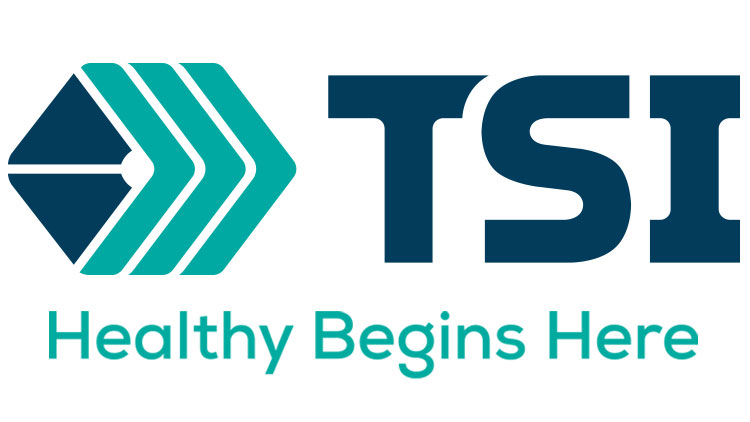Promotional Features
Create and Own New Markets with GlucosaGreen
Products that “disrupt” a current landscape by being so dramatically unique create unbridled optimism for everyone – the originator, the manufacturing brands, the media, the retailers and the consumers.
For example, “new and improved” has always been and continues to be an alluring phrase, creating consumer interest for trial. GlucosaGreen is such a distinguished ingredient with enormous potential for manufacturers in the always-burgeoning natural health/dietary supplement marketplace.
And there’s tremendous opportunities for brand marketers who want to gain traction in the crowded glucosamine and joint health space. Dietary supplements are embraced by an ever-widening number in the US, providing an unbreakable foundation for innovative launches.
According to 2019 2nd annual Trust Transparency Center Single Ingredient Trade Association Consumer Survey by the Trust Transparency Center, 64% of US respondents said they take supplements every day followed by 25% who consume supplements between one and six times per week, for a total of 89% of regular supplement users. The second most popular regular use of supplements is to address joint and other pain.
It is not news that consumers self-educate via websites and social media. However, this broad and shifting landscape may be better harnessed by brands, as the Trust Transparency Center’s survey attests – consumers at all levels of use and understanding still need to be better educated and properly led to the products that best suit their unmet needs and desires. There exists a strong correlation between knowledge of dietary supplements and brand/product loyalty. Knowledge is not only power, as declared by Sir Francis Bacon, it is empowering.
The Rationale for Glucosamine
Any market segment that has remained senescent needs an awakening. In the glucosamine sector, there is tremendous opportunity for brands to distinguish their joint health formulas in a crowded market by using a glucosamine source that meets growing needs for clean and vegan ingredients as well as fulfills desires for sustainability.
In the new survey, only 15% of supplement users said they never heard of glucosamine, while 36% of regular supplement users are taking glucosamine. Those described as irregular users would benefit by educational efforts – as 49% of that group were either minimally or moderately familiar with glucosamine.
The data from Trust Transparency Center has illustrated that there is a rather significant lack of awareness of the existence of a glucosamine that does no harm to animals, the planet and of course, to humans, but the interest in such a compound exists.
A compelling data point from the survey is that irregular users are more likely to be seeking out vegetarian (non-shellfish) glucosamine options and the paucity of such may be contributing to their irregular consumption. Regular glucosamine users can also benefit from more expansive education efforts in this space as 40% admit they know nothing about glucosamine sourcing with 28% identifying shellfish as the source.
The desire for sustainably sourced glucosamine is strengthening; according to the Trust Transparency Center research, respondents asserted they are willing to pay a premium for sustainably sourced glucosamine – in fact, sustainability is more important to glucosamine users than users of other supplements, as 49% of regular glucosamine consumers are influenced by sustainability concerns often, frequently, or always.
Consumers are also willing to pay a price premium for vegan, sustainably sourced, non-GMO glucosamine. Irregular glucosamine consumers also said they are more likely to be willing to pay a premium for many of these characteristics, indicating that there may be unmet market need.
When asked, “If you could purchase a non-GMO certified, corn-derived glucosamine which generated only 2% of the waste compared to shellfish glucosamine, and is the same or better quality, how would this affect your glucosamine purchase decision,” overwhelmingly, the majority of consumers declared they would indeed prefer the more sustainable option.
Currently, nearly all the glucosamine is produced from shellfish. Processing glucosamine from shellfish requires an extensive amount of chemicals and energy, which creates wastewater that harms the environment and planet.
GlucosaGreen®, from TSI, is the world’s first commercially available glucosamine produced from non-GMO corn.
TSI has created a novel patent protected process that transforms non-GMO corn via fermentation technology into a glucosamine that is proven to be bioequivalent to shellfish-derived glucosamine, and it is available in all salt forms desired by leading healthcare brands. In fact, GlucosaGreen produces only 2% of the waste compared to shellfish glucosamine. Its quality and bioequivalence are the same as shellfish material, but it is much better for the environment.
Comparing Glucosamine Sources
The process of obtaining glucosamine from shellfish is somewhat arduous. To obtain chitin (the raw material) from the shellfish, the process begins with alkali leaching, then alkali cooking, acid leaching, oxidizing, deoxidizing and drying. To make one metric ton (MT) of glucosamine HCL requires 2,000 kilograms (kg) of chitin, along with 5,000 kg of NaOH (lye) and 17,000 kg of 30% HCl. Producing 1 MT of traditional shellfish glucosamine requires 30 to 40 MTs of shellfish shells and creates 5 to 6 MTs of solid waste. Further, the process is responsible for creating up to 460 MT of wastewater with an unhealthy pH of 5.5.
There is indeed a vegetarian glucosamine. Another method of creating supplemental glucosamine involves using citric biomass from Aspergillus niger, a fungus whose shell contains high amounts of chitin. Yet this process, too, is not a healthy one for the environment: it produces 215 MT of wastewater and 25 MT solid waste.
In comparison, GlucosaGreen needs only 2 MTs of clean water to produce the same amount of conventional glucosamine – 99.9 percent less water than required for shellfish-derived glucosamine.
GlucosaGreen also has several more attributes that today’s discerning consumers will find favorable. It is a non-GMO-certified product, GRAS affirmed, is allergen- and shellfish-free, and no animal products are used in the entire fermentation and manufacturing processes.
Once consumers become aware of the impact shellfish glucosamine manufacturing has on the planet and that there is now a bioequivalent alternative, they will overwhelmingly demand GlucosaGreen. TSI’s brand dedicated website and educational video were created to educate consumers and to support the sales and marketing success of partner brands.
With GlucosaGreen manufactured from a readily available vegetable source through environmentally friendly methods, brands and consumers both can be reassured of a stable supply of clean, high-quality glucosamine. GlucosaGreen will help partner brands distinguish their products in a crowded joint health market.




